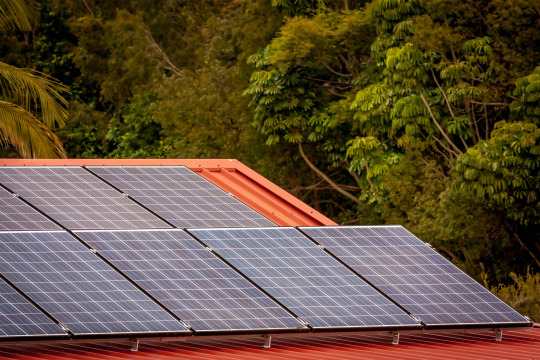Don't wanna be here? Send us removal request.
Text
How to Decide the Best Suitable Place for your Solar Inverter

Installing solar panels on your roof is an excellent way to harness renewable energy and reduce your electricity bills. However, to get the most out of your solar PV system, you need to carefully consider where to place the solar inverter. The inverter is the critical device that converts the DC current generated by the solar panels into AC current that can power your home appliances and lighting. Placing the inverter in an unsuitable location can lead to efficiency losses, overheating issues, and even inverter failure. So read on as we discuss the key factors to decide the best spot for installing your solar inverter.
Away from Direct Sunlight
The solar inverter works best in cooler temperatures. When exposed to direct sunlight, the inverter may heat up beyond its tolerance level, eventually resulting in lowered efficiency or even complete shutdowns. So it's vital to place the inverter in a shaded spot, away from sunlight. The east or north-facing walls under a shade or inside the garage are ideal inverter locations for most homes.
Well-Ventilated Space
Inverters generate a considerable amount of heat during operation. If this heat builds up and there is inadequate ventilation, it can begin to throttle down or shut off intermittently. This impacts energy generation amounts and inverter lifespan negatively over time. Hence, the inverter must be installed in a well-ventilated space so that hot air can dissipate readily, and cool air can flow through. Avoid small enclosed spaces lacking airflow.
Protected from Water Damage
Inverters contain complex circuitry and electronics prone to failure when coming in contact with water or moisture. So it's critical to install solar inverters at an adequately raised level above the ground and provide waterproof covering to prevent rain or flood damage. Also, avoid placing it close to water sources like overhead tanks, pipes, wash areas, etc. Consider water drainage paths on the roof and walls as well during monsoons.
Close to Solar Panels
Ideally, the inverter should be wall-mounted as close to the solar panels as possible because long DC cable runs between panels and inverter lead to power losses. Most string inverters can be placed up to 25 meters away from panels, but the shorter this distance, the better. For central and string inverters, installing them on the same floor or under the section of the roof where panels lie keeps DC cables short for maximum efficiency.
Accessibility for Maintenance
While operation is generally maintenance-free, inverters still need periodic upkeep checks, cleaning of filters, firmware updates, etc. Ease of access to the inverter for such work ensures that maintenance gets carried out on time. Avoid putting it in hard-to-reach narrow spaces. Also, there should be sufficient room in front for the technician to open up the cover and service it comfortably.
Protection from Rodents and Insects
Rodents like rats and squirrels frequently chew on electrical cables and dirt tracks, bees and insects can enter enclosures - risking fires, short circuits and inverter damage. Hence you must install wall-mounted inverters well above the ground level. Also, seal off any gaps, holes or cracks on the wall that pests can access. A mesh guard added as an additional safety measure.
Distance from Neighbours
Certain inverter models create audible humming or buzzing sounds which may disturb neighbours if placed close to dividing walls. To avoid noise complaints, mount the inverter at least 15-20 feet away from adjacent apartments or houses. Also, ensure no bedrooms, living rooms or workspaces lie immediately behind it.
Aesthetic Appeal
An outdoor or car port inverter location allows flexibility on placement, unlike a garage which may be the only covered area available. But do consider overall aesthetic appeal too - avoid mounting it at a highly visible front wall location unless you can enclose it neatly with a customized casing. With careful planning, the inverter can discreetly blend with the building facade.
Conclusion
When making that solar power investment, do focus attention on identifying the optimal inverter location instead of just going with the easiest mounting spot. Consider ventilation, temperature control, accessibility, noise and visibility factors for full-proof functioning. This ensures your solar system performs reliably for years with minimum maintenance headaches. Small efforts here greatly impact returns on your solar investment.
With over three decades of solar industry experience, Waaree Solar stands tall as India's leading EPC solutions provider. We engineer tailored solar energy systems for residential, commercial and industrial establishments - our expertise spans from customized panel and inverter selection to efficient rooftop layouts, top-quality equipment supply, professional installation, and long-term O&M services. Waaree's qualified team of waaree experts will assess your energy usage needs and property layout to design the right-sized solar system to maximize savings on your electric bills. They use precision tools and the latest technologies, to create truly customized systems tailored to your unique requirements.
Once installed, Waaree provides hands-on guidance to ensure you get the most from your solar power system. So adopting solar is a smooth, stress-free process with positive results for decades to come. Contact Waaree energies today.
1 note
·
View note